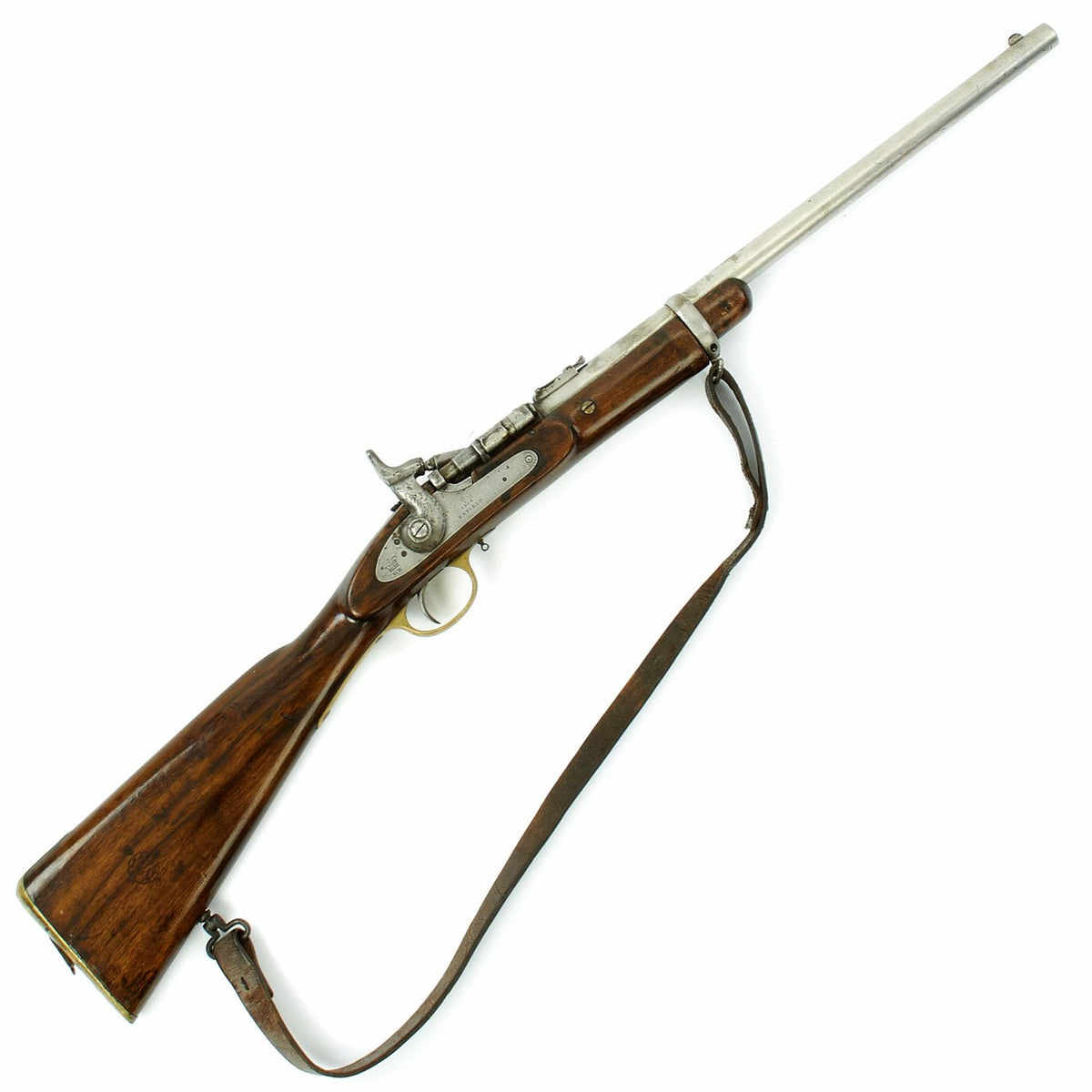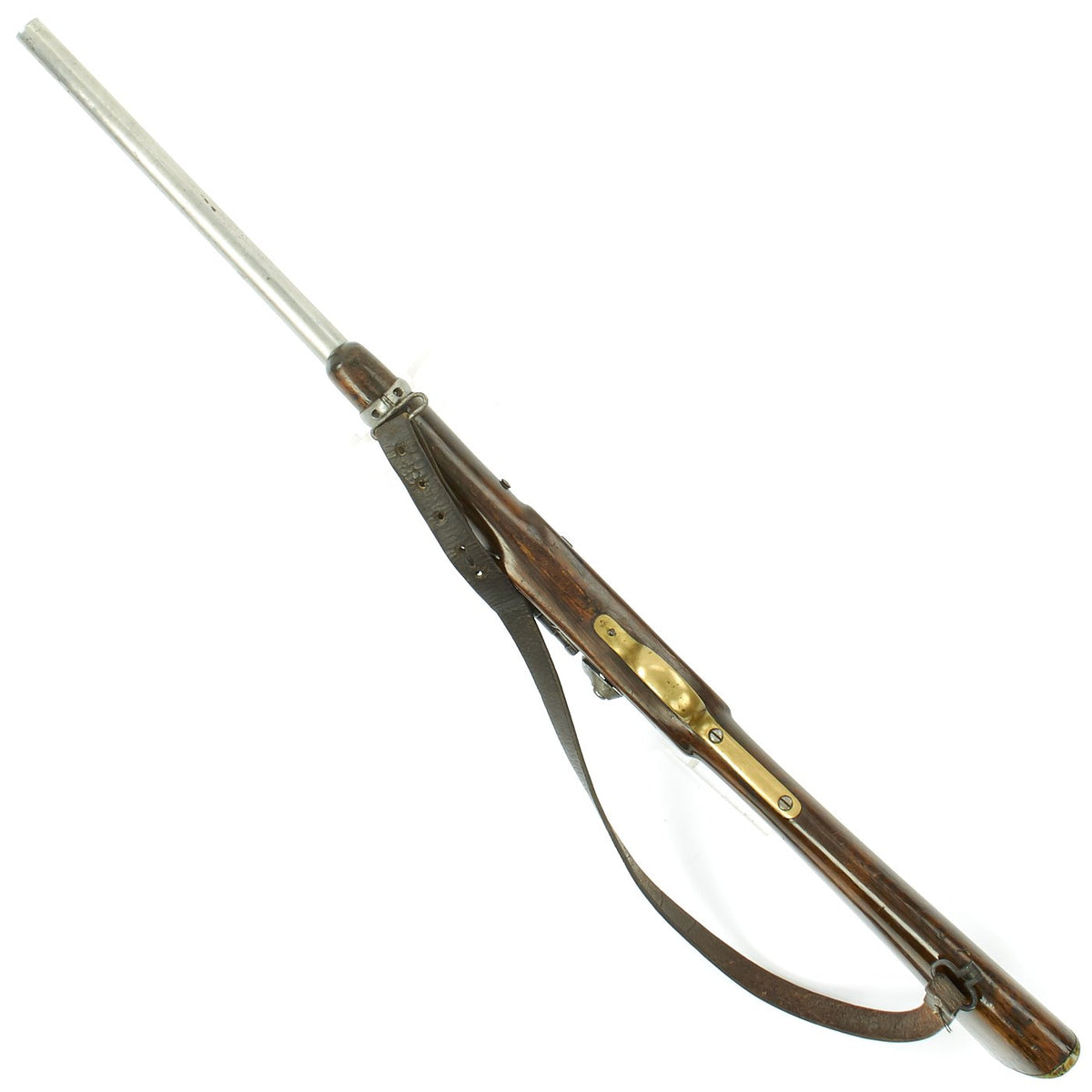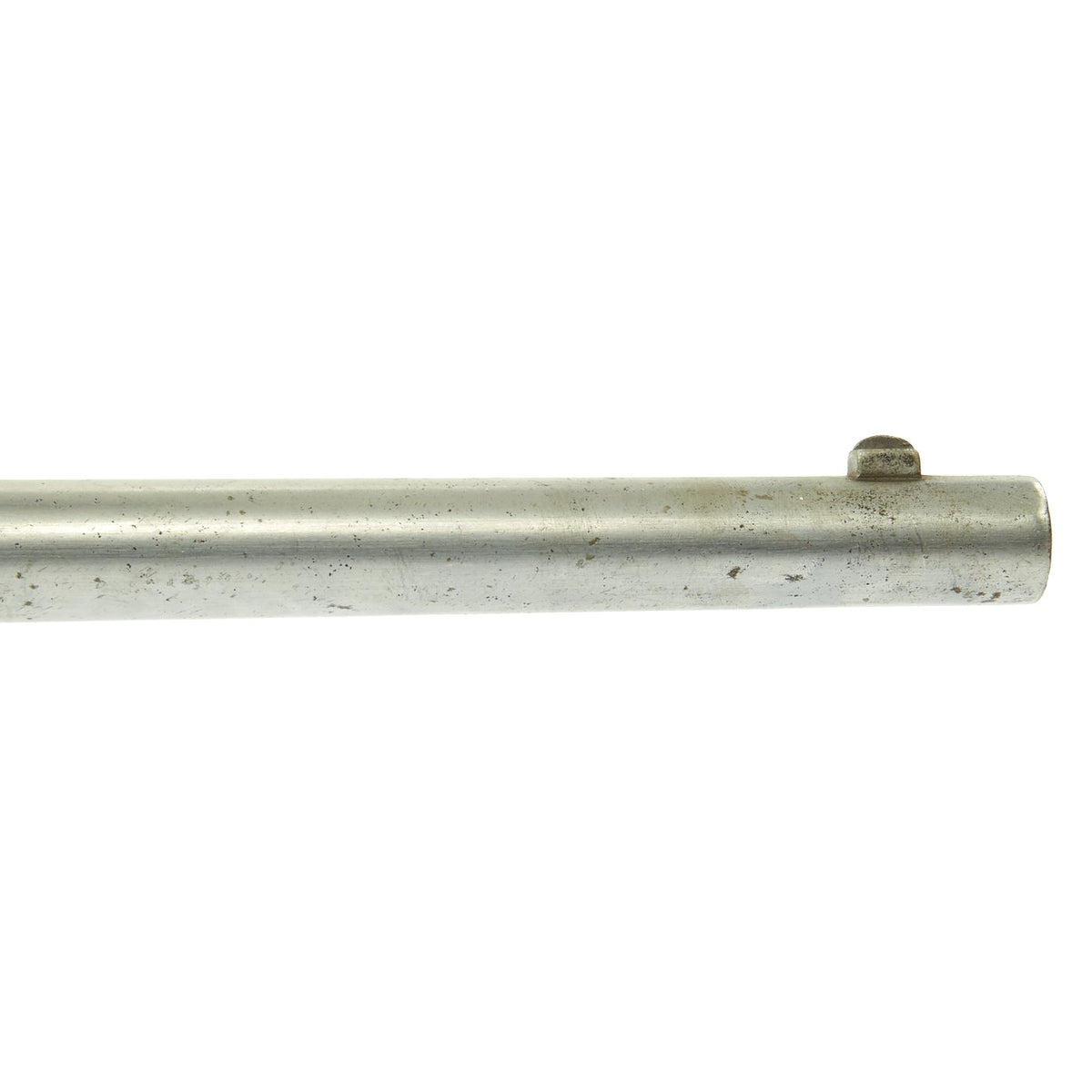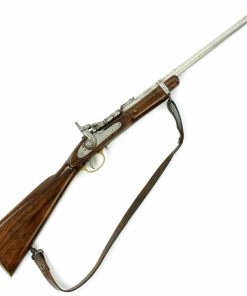Original British P-1853 Enfield Carbine Converted to Snider Mk.III with Sling – dated 1864 Original Items
$ 795,00 $ 238,50
Original Item: Only one available. We just received this lovely Antique pistol, along with about 200 other guns, from a collection that sat in an attic for close to 100 years. This rifle is British manufacture, starting life in 1864 as a .577 caliber ENFIELD Percussion carbine model of P-1853. The lock plate stamped “CROWN” over V.R. and ENFIELD / 1864. The barrel has copious British markings and proof marks, which are present on other parts of the gun as well.
The wood butt retaining part of its original rondel cartouche, however it is not legible. The barrel has the rare five groove rifling and the bore shows clear lands and grooves, with just a bit of oxidation. There is the correct III stamped on top of the breech, indicating it is the MkIII version of the breech. The action works correctly, and the breech opens and locks, though it has a lot of grease in it, so it sticks a bit.
There are however some rather interesting aspects to this converted carbine. It has a butt trap, which looks to be for a two part cleaning rod. It also has a sling seivel on the butt, which looks almost like it came from a Martini-henry. there is a short leather sling permanently attached to the sling swivels. The front of the stock looks to have some type of resin nose cap.
Definitely an interesting Snider converted carbine, ready to display and research!
More on the P-1853 Rifle-Musket: The Enfield Pattern 1853 rifle-musket (also known as the Pattern 1853 Enfield, P53 Enfield, and Enfield rifle-musket) was a .577 calibre Minié-type muzzle-loading rifle-musket, used by the British Empire from 1853 to 1867, after which many Enfield 1853 rifle-muskets were converted to (and replaced in service by) the cartridge-loaded Snider-Enfield rifle.
The term “rifle-musket” originally referred to muskets with the smooth-bored barrels replaced with rifled barrels. The length of the barrels were unchanged, allowing the weapons to be fired by rank, since a long rifle was necessary to enable the muzzles of the second rank of soldiers to project beyond the faces of the men in front. The weapon would also be sufficiently long when fitted with a bayonet to be effective against cavalry. Such guns manufactured with rifled barrels, muzzle loading, single shot, and utilizing the same firing mechanism, also came to be called rifle-muskets.
The 39 in (99 cm) barrel had three grooves, with a 1:78 rifling twist, and was fastened to the stock with three metal bands, so that the rifle was often called a “three band” model.
History of the Snider rifle– Jacob Snider, an American from New York, developed this breech loading system for the P-1853 Enfield, the most prolific imported Percussion rifle in use by both the North and South during the U.S. Civil War. When the British Board of Ordnance appointed a Select Committee in 1864 the Snider system was swiftly adopted with the first breech loaders being issued in 1865 to British forces.
Improved in 1867 by the use of Colonel Boxer’s center fire brass bodied cartridge, the rifle was used very effectively in the Abyssinian Campaign of 1868. The system utilized a hinged breech block with an internal firing pin assembly that permitted the use of a self contained cartridge of lead bullet in cardboard, and, after 1867, brass casing. This highly efficient conversion system prolonged the active life of the P-1853 rifles up until 1871 when the Martini System was adopted. Snider rifles saw continued use throughout the Empire but were officially obsoleted by the late 1880s.
Specifications:
Year of Manufacture: 1864 – Converted Later
Caliber: .58 inches – 5 groove rifling
Ammunition Type: .577 Centerfire Cartridge
Barrel Length: 19 inches
Overall Length: 37 1/4 inches
Action: Side Action Lock
Feed System: Side Hinge Rotating Breech block
NOTE: International orders of antique firearms MUST be shipped using UPS WW Services (courier). USPS Priority Mail international will not accept these.
Fast Shipping with Professional Packaging
Thanks to our longstanding association with UPS FedEx DHL, and other major international carriers, we are able to provide a range of shipping options. Our warehouse staff is expertly trained and will wrap your products according to our exact and precise specifications. Prior to shipping, your goods will be thoroughly examined and securely secured. We ship to thousands clients each day across multiple countries. This shows how we're dedicated to be the largest retailer on the internet. Warehouses and distribution centres can be located throughout Europe as well as the USA.
Note: Orders with more than one item will be assigned a processing date depending on the item.
Before shipping before shipping, we'll conduct a thorough inspection of the items you have ordered. Today, the majority of orders will be delivered within 48 hours. The delivery time will be between 3-7 days.
Returns
The stock is dynamic and we cannot completely manage it because multiple stakeholders are involved, including our factory and warehouse. So the actual stock may alter at any time. It's possible that you may not receive your order once the order has been made.
Our policy is valid for a period of 30 days. If you don't receive the product within 30 days, we are not able to issue a refund or an exchange.
You can only return an item if it is unused and in the same state as the day you received it. You must have the item in its original packaging.
Related products
Uncategorized
Angolan Rebel 1970s era 60mm Inert Display Mortar from Angolan Civil War Original Items
Uncategorized
Armoured Fighting Vehicles of the World: AFVs of World War One (Hardcover Book) New Made Items
Uncategorized
Uncategorized
Uncategorized
Uncategorized
Uncategorized
Uncategorized
Uncategorized
Uncategorized
Uncategorized
Uncategorized
Uncategorized
Uncategorized
Uncategorized
Uncategorized
Uncategorized
Armored Burgonet Helmet & Polearm from Scottish Castle Leith Hall Circa 1700 Original Items
Uncategorized
Uncategorized












































































